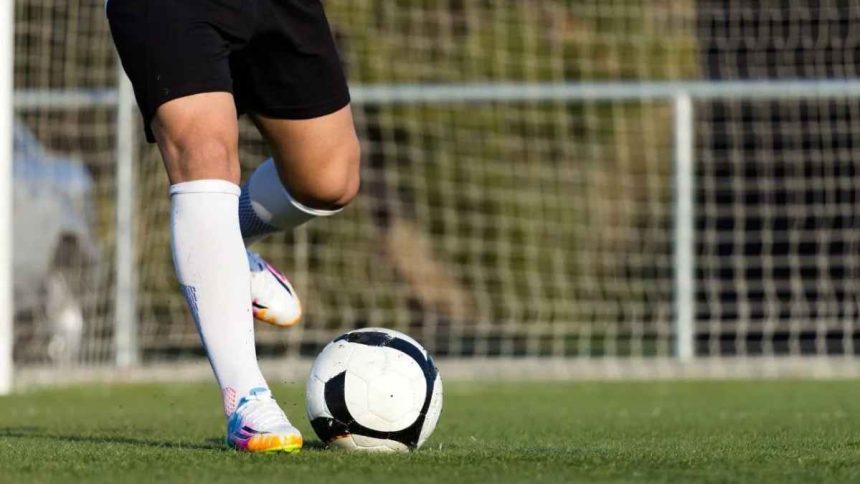In the world of football, every player strives to gain that extra edge, to push their performance to the maximum. From grueling training sessions to strategic game plans, athletes leave no stone unturned in their pursuit of excellence. One often-overlooked aspect of enhancing football performance is the choice of gear, specifically, football compression socks. These unassuming garments can make a significant difference in a player’s game, and in this comprehensive guide, we’ll delve deep into the world of football compression socks.
Unraveling the Benefits of Compression Socks in Football
1. Improved Blood Circulation
One of the primary advantages of wearing compression socks during football matches is their ability to enhance blood circulation. The gentle pressure applied by these socks helps blood vessels to work more efficiently, ensuring a steady flow of oxygen-rich blood to the muscles. This increased blood flow translates into improved endurance and reduced muscle fatigue during those crucial moments on the field.
2. Muscle Support and Stability
Football players are no strangers to the demands placed on their lower limbs. The constant running, sudden changes in direction, and tackling can put significant strain on the muscles. Compression socks provide valuable support to these muscles, reducing the risk of injury and muscle soreness. This added stability can be a game-changer, allowing players to perform at their best without the fear of unexpected setbacks.
3. Faster Recovery
Football compression socks are not just for the heat of battle; they play a vital role in post-game recovery as well. After an intense match, wearing compression socks helps in reducing muscle soreness and inflammation. By aiding in the removal of metabolic waste products like lactic acid, these socks can significantly hasten the recovery process, ensuring players are ready for the next game or training session.
4. Temperature Regulation
Football is played in various weather conditions, and maintaining the right body temperature is crucial for optimal performance. Compression socks, often made from breathable materials, assist in regulating body temperature by wicking away sweat and providing insulation when needed. This versatility makes them suitable for both hot summer matches and chilly winter games.
The Science Behind Compression Socks
Understanding Compression Levels
Compression socks come in various compression levels, typically measured in millimeters of mercury (mmHg). The choice of compression level depends on the intended purpose:
- Mild Compression (8-15 mmHg): Suitable for players looking for mild support and increased blood circulation without significant compression.
- Moderate Compression (15-20 mmHg): Ideal for preventing muscle fatigue and reducing the risk of injury during training and matches.
- Firm Compression (20-30 mmHg): Reserved for those requiring strong support, often recommended for post-injury recovery.
Graduated Compression
One key feature of quality football compression socks is graduated compression. This means the pressure gradually decreases from the ankle towards the calf. This design is based on scientific principles and helps in maintaining optimal blood flow throughout the leg. It’s essential to choose socks with this feature for the best results.
Material Matters
The material used in compression socks also plays a vital role in their effectiveness. Common materials include:
- Nylon: Lightweight and durable, it provides a snug fit and excellent moisture-wicking properties.
- Spandex: Adds elasticity, ensuring the socks stay in place during rigorous activities.
- Copper-Infused Fabric: Known for its anti-microbial properties and potential pain relief.
- Merino Wool: Provides natural insulation and is suitable for colder weather conditions.
Finding the Right Fit
Achieving the benefits of compression socks depends on getting the right fit. Ill-fitting socks can be uncomfortable and may not deliver the intended results. To find your perfect fit, measure your ankle and calf circumference and consult the manufacturer’s sizing chart. It’s essential to ensure that the socks are snug but not overly tight, as this can lead to discomfort and restricted blood flow.
Choosing the Best Football Compression Socks
1. Brand and Reputation
When it comes to your athletic gear, especially something as crucial as compression socks, it’s wise to stick to reputable brands known for their quality and durability. Brands like Nike, Adidas, Under Armour, and CEP have earned their stripes in the world of sports gear and are known for producing top-notch compression socks.
2. Compression Level
As mentioned earlier, the choice of compression level should align with your specific needs. Consult with a sports physician or physical therapist if you’re unsure about which compression level is right for you.
3. Material and Breathability
Consider the material and breathability of the socks, especially if you’re playing in extreme weather conditions. Moisture-wicking properties and temperature regulation can make a significant difference in your comfort on the field.
4. Graduated Compression
Ensure that the compression socks you choose feature graduated compression for optimal blood flow and muscle support.
5. Reviews and Recommendations
Before making a purchase, it’s a good idea to read reviews and seek recommendations from fellow football players or athletes. Their firsthand experiences can provide valuable insights into the performance of different brands and models.
How to Wear Football Compression Socks
Wearing compression socks correctly is crucial to reap their full benefits. Here’s a step-by-step guide on how to put them on:
- Prepare Your Socks: Turn the socks inside out, so the heel is facing outward.
- Fold Down the Top: Fold the top of the sock down to create a small cuff.
- Insert Your Foot: Place your foot into the sock and ensure the heel is in the right position.
- Gradually Unroll: Gradually unroll the sock up your leg, smoothing out any wrinkles as you go.
- Adjust Fit: Make sure the sock fits snugly but isn’t overly tight. Pay attention to any uncomfortable pressure points.
- Check for Uniform Compression: Ensure that the compression is evenly distributed throughout your leg, with the highest pressure around the ankle and gradually decreasing as you move up.
Caring for Your Compression Socks
To ensure the longevity of your football compression socks, it’s essential to follow proper care instructions:
- Wash them gently: Hand wash or use a delicate cycle in cold water with mild detergent.
- Avoid fabric softeners: Fabric softeners can break down the elasticity of the socks.
- Air dry: Never use a tumble dryer, as high heat can damage the compression material.
- Rotate your socks: Having multiple pairs of compression socks allows you to rotate them, extending their lifespan.
Football Compression Socks for Injury Prevention
In addition to enhancing performance, compression socks can play a vital role in preventing common football injuries:
1. Ankle Sprains
Football compression socks with reinforced ankle support can help stabilize the joint and reduce the risk of sprains.
2. Shin Splints
Shin splints are a common complaint among football players. Compression socks can aid in reducing muscle vibration and inflammation, decreasing the likelihood of developing shin splints.
3. Calf Strains
The calf muscles are heavily involved in football movements. Compression socks provide the necessary support to reduce the risk of calf strains during intense play.
Do Compression Socks Really Work?
Skepticism is natural when it comes to claims about performance-enhancing gear. However, numerous studies and the experiences of professional athletes provide strong evidence in favor of compression socks. While individual results may vary, the science behind these socks, coupled with anecdotal evidence, suggests that they can indeed make a significant difference in a player’s performance and overall comfort on the field.
In Summary
Football compression socks are a versatile and valuable addition to any football player’s gear arsenal. Their ability to enhance blood circulation, provide muscle support, aid in recovery, and regulate body temperature can make a significant difference in your performance and overall well-being on the field. When choosing compression socks, pay attention to factors like compression level, material, and fit to ensure you get the most out of this essential piece of football gear.
So, whether you’re a seasoned professional or just starting your football journey, consider adding compression socks to your kit. The benefits they offer can help you maximize your game and elevate your performance to new heights, ensuring you’re always at the top of your footballing prowess.
Lynn Martelli is an editor at Readability. She received her MFA in Creative Writing from Antioch University and has worked as an editor for over 10 years. Lynn has edited a wide variety of books, including fiction, non-fiction, memoirs, and more. In her free time, Lynn enjoys reading, writing, and spending time with her family and friends.















